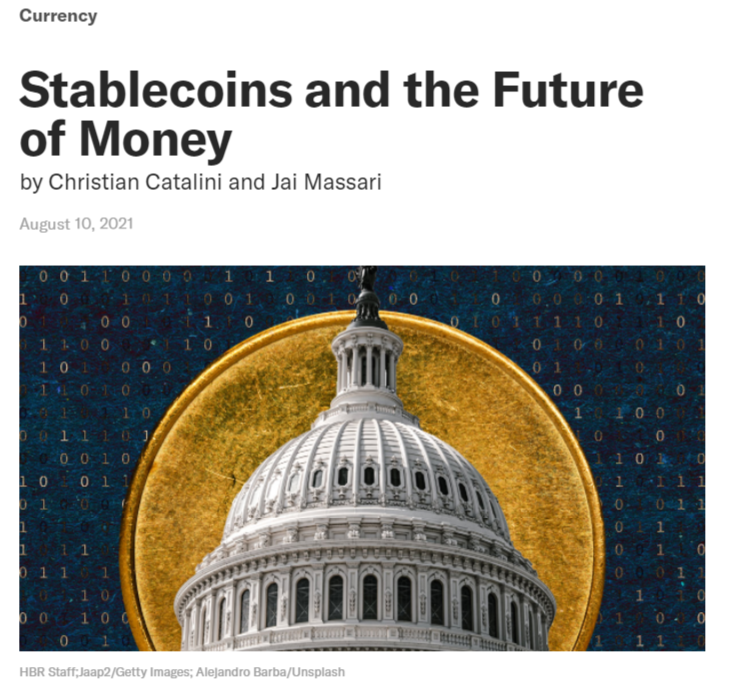
Christian Catalini, a Diem Association chief economist and co-creator, and Jai Massari, Diem's counsel, covered the three main concepts of stablecoins' segment for Harvard Business Review.
No stablecoins without regulation
The authors of the article are sure that the U.S. watchdogs and lawmakers have stated that strengthening cryptocurrency regulations is a matter of "when," not "if." This fact reflects the growing confidence in stablecoins' leading role in the future economy.

The mainstream adoption of stablecoins can bring multiple benefits for institutions and individuals, in particular — for those who remain unbanked in 2021.
All in all, this is good for both stablecoins and their holders. The authors stress that the absence of regulatory rules will ruin the value and the operability of the stablecoins of all sorts:
But without robust legal and economic frameworks, there’s a real risk stablecoins would be anything but stable
All the stablecoins are divided into three categories by their design, economic model, use-cases, and underlying assets: true stabecoins, deposit stablecoins, and CBDCs.
A bumpy road to CBDC
True stablecoins, the authors add, actually represent "narrow banks" as their peg to some fiat currency is guaranteed by certain financial entities. True stablecoins are a transparent (yet expensive) type of stablecoins.
Deposit stablecoins are a tokenized form of demand deposit claims of a certain bank. Holders of "deposit stablecoins" are protected by the regulations of bank deposits and FDIC insurance up to $250,000. This form of stablecoin is more reliable, but it lacks interoperability with other traditional and digital value transfer instruments.
CBDCs, issued and controlled by central banks, are more like "digital cash" but on blockchain rails. That's why "CBDCs and stablecoins are strong complements, not substitutes."
The authors concluded that the road to the release of viable CBDCs won't be rosy:
Given the incredibly high bar in terms of resilience and security, it will likely take years for a CDBC to be developed and adopted
 Dan Burgin
Dan Burgin Vladislav Sopov
Vladislav Sopov U.Today Editorial Team
U.Today Editorial Team